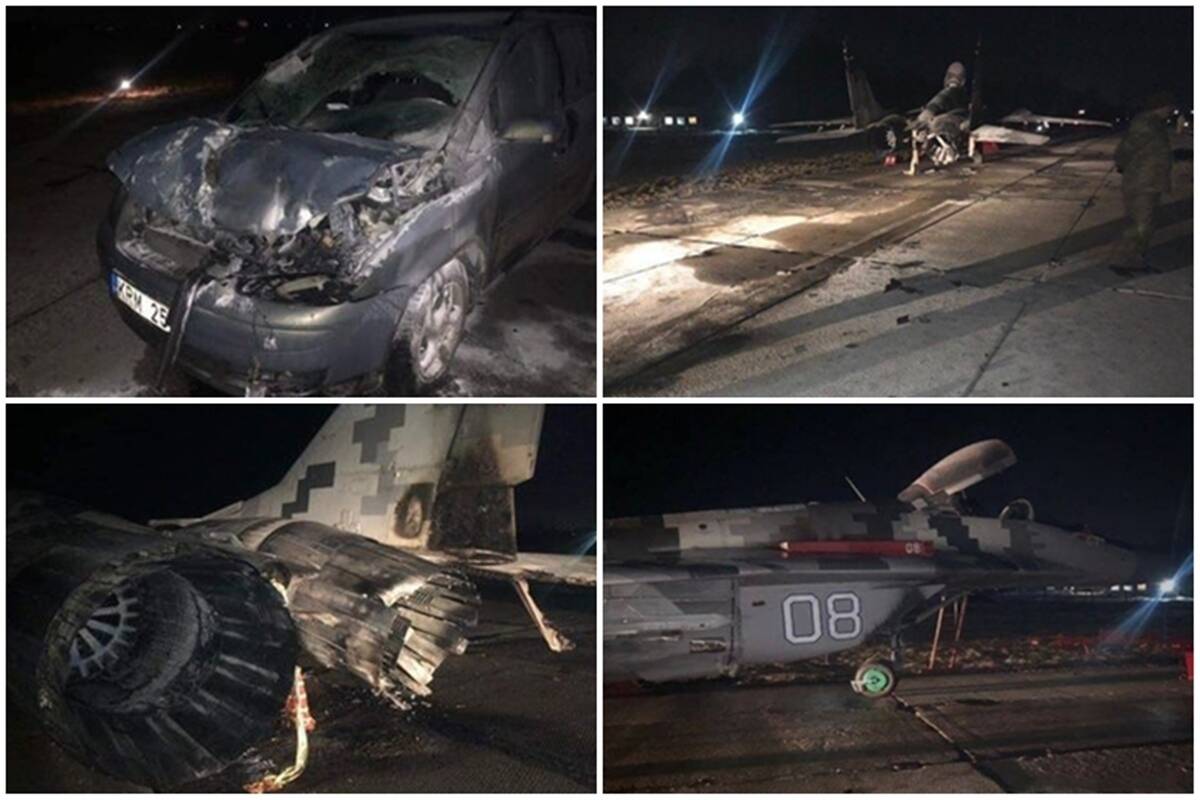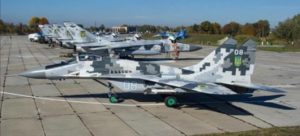Defence
Drunk Car Driver Crashes Into A Ukrainian MiG-29 Fighter Jet

In a strange incident of drunk driving, a Ukrainian Air Force Officer rams his Volkswagen Touran car into a parked MiG-29 fighter jet, causing a fire and destruction of both vehicles and singlehandedly reduced the country’s strength of MiG fighters by 4 percent.
No matter what mistakes you’ve made recently, they probably don’t compare to this Ukrainian captain who rammed a MiG-29 fighter with his Volkswagen Touran while drunk.https://t.co/GCQn5dHBwehttps://t.co/VJ2OeQfumn pic.twitter.com/XwszW5FNWD
— Rob Lee (@RALee85) March 12, 2021
The incident took place on March 10 at an air base near Vasilkov in central Ukraine. The incident occurred when the officer drove the car, was from the 40th Tactical Aviation brigade. The officer was intoxicated and rams his car into MiG-29’s scorched tail fin, rear stabilizer as well as damaged thrust nozzles. The Touran was also damaged as the hood and windshield were smashed. Thankfully, no was seriously injured as the driver reportedly only received minor bruises and admitted to the hospital immediately. The driver is now facing charges and criminal proceedings are being carried out by a group of prosecutors from the military prosecutor’s office.
According to Ukrainian Air Force, the aircraft shall be most likely decommissioned from service and salvaged for spare parts. The country inherited the jets after collapse of the Soviet union, making them atleast 30 years old. Of those 24 jets, only 16 are frontline fighters, the remaining eight are used as training aircraft. This incident took out 4% of their fleet. The MiG-29 costs between $11-20 million. The MiG, whose number is 08 was apparently serving as a frontline fighter, where you can see a photo of Number 08 before the collision, Ukraine’s Air Force had planned to enter into an agreement last year with Israeli defense contractor Elbit to modernize 11 of the MiGs. The modernization effort was expected to cost $40 million per jet. It’s not clear if Number 08 was one of the those $40 million jets.

Defence
Turkey Scraps F-16 Upgrade Deal, Chooses Domestic Tech

In a significant shift in its defense procurement strategy, Türkiye has scaled down its $23 billion F-16 fighter jet package from the United States.
The revised deal, announced on Tuesday, excludes the purchase of 79 modernization kits for its existing fleet of F-16s. Instead, Türkiye will rely on its domestic aerospace industry to upgrade its aircraft, showcasing the growing capabilities of Turkish defense manufacturers.
According to Turkish Defense Minister Yaşar Güler, Türkiye has already made an initial payment of $1.4 billion for the procurement of 40 new F-16 Block 70 Viper jets from Lockheed Martin.
Tejas and C-390 Millennium: India and Brazil’s Defense Trade Vision
“We opted out of buying the 79 modernization kits because our Turkish Aerospace Industries (TUSAŞ) are capable of conducting these upgrades independently,” Güler stated. The decision highlights Türkiye’s commitment to enhancing its indigenous defense capabilities while still acquiring new aircraft from the U.S.
The new agreement, which includes the 40 F-16 Block 70 jets and associated ammunition, is expected to cost approximately $7 billion.
The Block 70 variant, also known as the “Viper,” features advanced technologies such as the Northrop Grumman APG-83 Scalable Agile Beam Radar, a modernized cockpit, improved networking capabilities, a new mission computer, enhanced electronic warfare systems, and an upgraded communications suite.
However, it remains unclear which of these upgrades Turkish Aerospace Industries will undertake independently for the existing fleet. Türkiye’s original order for the F-16 jets was placed in October 2021, two years after it was removed from the fifth-generation F-35 Joint Strike Fighter program.
Air India Might Operate Tata-Made New Airbus C295 Aircraft
The exclusion followed Türkiye’s acquisition of the Russian-made S-400 missile defense system, which led to U.S. sanctions and the termination of Türkiye’s participation in the multinational F-35 project.
Despite the setback, Türkiye remains determined to rejoin the F-35 program and acquire 40 new F-35 jets.
“We insist on reclaiming our production share and maintain our request to acquire F-35s,” Güler emphasized, adding that while there are indications of willingness from the U.S. to discuss the matter, no concrete progress has been made.
Meanwhile, Türkiye continues to advance its domestic fighter jet program. The country’s fifth-generation fighter, the Kaan, completed its maiden flight in February 2024, and mass production is expected to begin by 2028.
This ambitious project underscores Türkiye’s broader strategy to reduce reliance on foreign military technology and bolster its domestic defense industry.
-

 Aviation2 months ago
Aviation2 months agoMicrosoft Flight Simulator Raises $3 Million to Bring Back the An-225 Mriya
-

 Airlines2 months ago
Airlines2 months agoQatar Citizens Can Travel to the United States Without a Visa
-

 Aviation2 months ago
Aviation2 months agoQatar Airways bans these new Electronic Devices on plane
-

 Defence2 months ago
Defence2 months agoWhich Country Has the Largest Fleet of Fighter Aircraft?
-

 Airlines1 week ago
Airlines1 week agoDAMAC Air: Dubai’s New Luxury Airline Offers Free Flights for Registration
-

 Airport2 months ago
Airport2 months agoWestern Sydney Airport Welcomes Its First Plane After 6 Years of construction
-

 Airlines7 days ago
Airlines7 days agoAir India to Launch aircraft maintenance training institute in Bengaluru
-

 Aviation2 months ago
Aviation2 months agoDid you know ? Once Boeing 747 carried 1088 passenger in 1991









